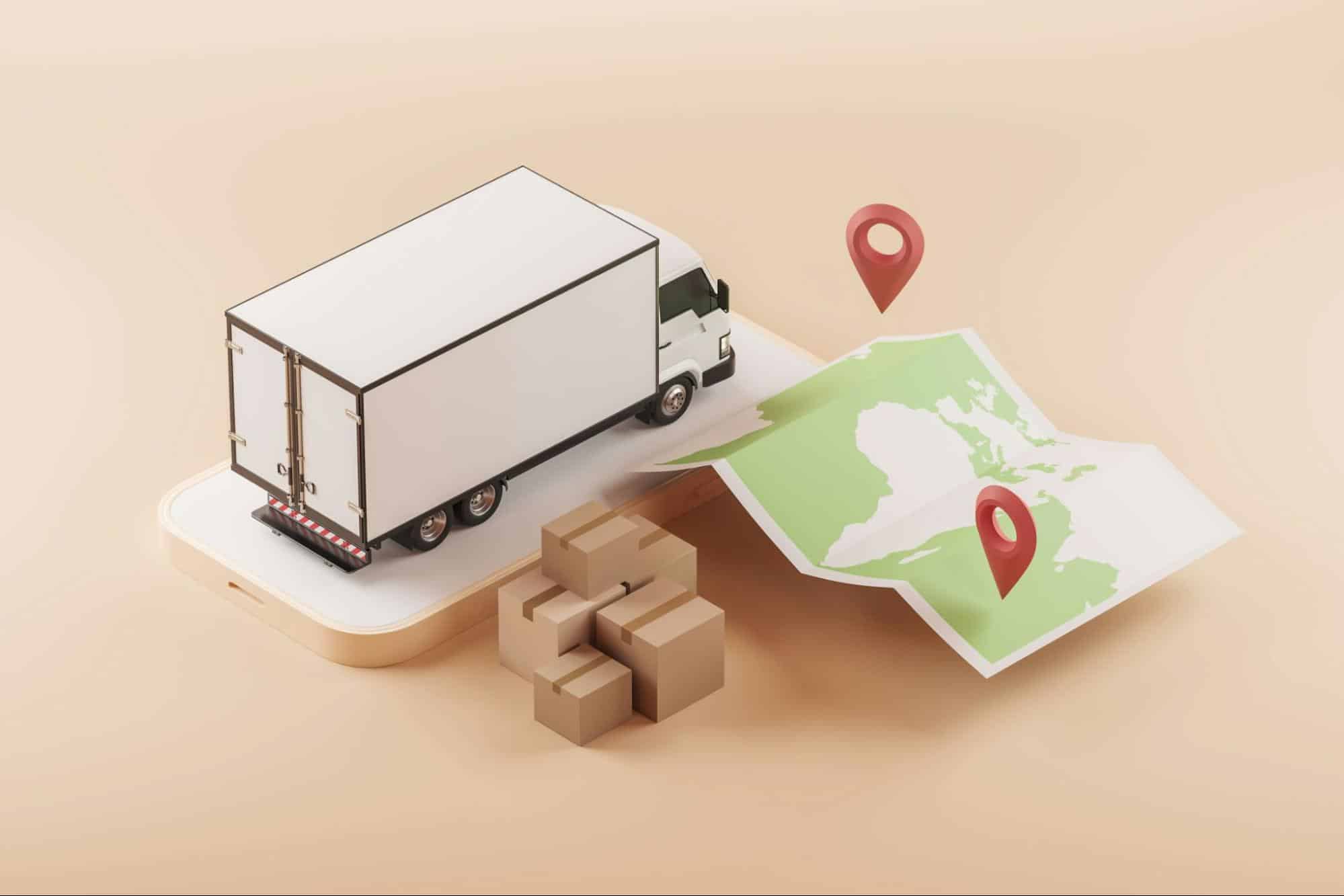Moving to New York is an exciting opportunity, but the costs can be overwhelming if not carefully planned. By understanding the expenses tied to shipping your household items and vehicle, you can avoid financial strain later. For instance, moving a 2-3 bedroom home over 1,000 miles typically costs $2,500 to $5,000. If you decide on additional services such as packing or transporting specialty items like pianos, these could further increase your budget. Each specific detail was gathered meticulously to ensure accuracy and reliability.
Knowing how this works helps manage expectations and finances when it comes to shipping your vehicle. Choosing between DIY moves and professional movers also plays a major role in budgeting. Renting a truck might seem more affordable upfront, but don’t forget fuel, tolls, and potential lodging costs. On the other hand, professional full-service moves offer simplicity at higher prices but save your time and effort significantly. Balancing these options will give you an informed approach to estimating your relocation budget accurately, according to A1 Auto Transport in New York.
When budgeting for your move to New York, consider factors like the cost of hiring a moving company, packing supplies, insurance for your belongings, and vehicle shipping fees. It’s essential to gather quotes from multiple service providers and identify any additional expenses such as fuel, tolls, or temporary housing if needed during the transition.
Estimating Household Moving Costs
The size and distance of your move are paramount in estimating household moving costs. A good rule of thumb is that a move involving a 2-3 bedroom home over a distance of up to 1,000 miles typically costs $2,500 to $5,000. This breadth in pricing reflects the distance and factors like the volume of belongings being transported and the type of service you choose.
Size and Distance
For instance, the costs will naturally escalate if you have a larger home with more furniture and belongings. It’s essential to consider the number of rooms and items you have, as this directly affects packing time, transportation needs, and potential storage requirements during transit.
Additional Services
While assessing your budget, remember about additional services that can significantly influence overall costs. Many moving companies offer packing services that add anywhere from $300 to $1,500, depending on the extent of help needed. Suppose you own specialty items such as pianos or fine art. Due to their delicate nature, transporting these can introduce extra charges of around $200 to $500.
- Packing services can add between $300-$1,500.
- Specialty item transport (e.g., pianos) might cost an extra $200-$500.
- Insurance for high-value items might add up to 1% of the total move value.
Additionally, consider insuring valuable items; insurance often constitutes about 1% of the total estimated value of your possessions, which can seem minimal compared to what might be lost or damaged in transit. Every piece adds up and will give a clearer picture when establishing your budget.
DIY Moving vs. Professional Services
Choosing between a do-it-yourself (DIY) approach and employing professional services for your move can be daunting. It’s important to consider the financial implications and the time, effort, and stress associated with each option.
With DIY moving, you gain control over the process, allowing you to pack and load at your own pace. However, as enticing as it may sound to save money by doing it yourself, the hidden costs often sneak up on you.
DIY Costs
Renting a moving truck can set you back anywhere from $1,000 to $2,000 for cross-country journeys. Don’t forget to factor in additional expenses such as fuel, tolls, and potentially even lodging if you’re traveling long distances.
For example, fuel costs alone can vary significantly based on gas prices and the fuel efficiency of the rental truck, which tends to be lower than that of an average car. This means planning is vital—calculate estimations for total mileage, fuel usage, and extra stops along the way.
Professional Moving Services
On the other hand, hiring professional movers offers a wealth of benefits that can ultimately justify the higher price tag. Full-service moves typically range from $4,000 to $10,000, but consider how much time and effort you will save.
Professional movers are trained to handle heavy lifting efficiently, navigate the intricacies of packing fragile items, and secure everything safely during transit. The peace of mind from knowing your belongings are in capable hands can outweigh the added expense.
Calculating Vehicle Shipping Costs

Several key factors come into play when considering how much it will cost to ship your vehicle. Beyond just distance and transport method, you must also account for your vehicle’s size, pickup and delivery locations, and any additional services that may be required. Each of these aspects contributes significantly to the final price you’ll pay.
Distance and Transport Method
The table above highlights the difference in costs based on varying distances and types of transport. Open transport is the more economical option if you’re looking to save money; however, it does pose some risks, as your vehicle will be exposed to environmental elements like rain or road debris during transit. On the flip side, enclosed transport offers better protection but comes at a higher price. It’s particularly advantageous for vintage or luxury vehicles that could suffer damage from exposure during transport.
As you strategize your vehicle shipping budget, consider the vehicle’s dimensions and weight. Different transport companies have specific loading capacities; larger vehicles, such as SUVs or trucks, might incur additional fees due to their size. Understanding these factors can help prevent surprise costs once you’ve decided on a shipping option.
Furthermore, this leads us to another significant point – pickup and delivery locations. Suppose your vehicle needs to be picked up from a remote area or requires special arrangements for delivery (like urban areas with restricted access). In that case, transportation companies may charge extra for those services.
Optional services worth considering can also impact your overall shipping cost. For instance, if you’d rather have your car picked up from your doorstep instead of a depot or wish to track your vehicle in real-time during transit, these perks often come with additional fees. Therefore, weigh the convenience against the expense.
Hiring Vs. Self-Transport Options

Opting to hire a vehicle shipping service has its undeniable advantages, chiefly that it alleviates the stress associated with transporting your car during your move. This means less wear and tear on your vehicle and the convenience of not having to navigate potentially long distances yourself.
However, this comfort comes at a price—typically $600 to $2,500, depending on factors such as the distance you’re moving and whether you choose an open or enclosed carrier. The level of care provided also influences cost; while open transport is cheaper, it exposes your vehicle to the elements.
Self-Transport
On the other hand, self-transport can provide significant flexibility and a personal touch to your relocation experience. Driving your own vehicle allows for complete control over your schedule, which can alleviate some frustrations that accompany traditional moving services.
If you’re looking to save money, this could be a more cost-effective route; however, it’s essential to be mindful of potential hidden expenses that may inflate your budget. Consider fuel costs, which can mount significantly over long distances, and meals and accommodations if your journey stretches over multiple days. Considering those factors might add an extra $300-$800 to what you initially thought would be a straightforward plan.
Identifying Hidden Costs
As you prepare for your move, it’s crucial to understand that there are more expenses lurking in the shadows than what might be on the surface. One of the primary culprits is storage fees. When your new apartment or house isn’t quite ready to welcome you, you might need a temporary place to stow your belongings. This can range from $50 to $200 a month, depending on the facility and the size of your load. Planning can help mitigate this cost by confirming your move-in date with your landlord well in advance.
Temporary accommodation is yet another expense that often doesn’t get the attention it deserves. If there’s a gap between leaving your old residence and moving into your new one, you may need to find a place to stay — which could cost anywhere from $70 to $150 a night. Researching nearby hotels or short-term rentals ahead of time will allow you to budget accordingly.
To put everything into perspective, let’s consider Julia’s story.
Julia thought she had set aside enough funds for her move to New York City. However, once she encountered significant storage costs, along with unplanned utility setup fees and temporary lodging expenses, her budget ballooned by nearly $1,000! This experience underscores the significance of thorough planning.
It’s not just about calculating movers’ costs but evaluating all possible financial factors that come into play during a move.
One way to avoid these pitfalls is to create a detailed checklist that outlines every expected expense. Consider breaking down categories such as moving supplies, transport costs, utility bills, storage needs, and temporary housing fees. Tracking these items will provide clarity on your overall moving budget and help detect hidden costs sooner rather than later.
Budgeting apps can also streamline this process by allowing you to track expenses in real-time. Combine this technology with your checklist for a comprehensive view of where your money goes throughout the moving process.
Tools and Tips for Your NY Move Budget
Careful planning and utilizing the right tools can help you stick to your budget. First, let’s explore some budgeting tools that can make your moving experience more organized and less stressful.
Budgeting Tools
Apps like Mint or You Need a Budget (YNAB) are excellent resources for tracking and managing moving expenses effectively. These platforms allow you to categorize your costs and provide visual representations of your spending, making it easier to stay within your limits. You can create specific categories for packing supplies, transportation, and service fees, helping you see where your money is going at a glance.
In addition to using budgeting apps, creating a comprehensive moving checklist can keep you organized. This list should include all tasks along with their corresponding costs. For example, tracking down the price of packing materials ahead of time ensures there are no unexpected expenditures on move-in day.
Tips
Several practical strategies can help you stay within your budget while ensuring a smooth transition:
- Get Multiple Quotes: Always gather quotes from different moving companies to find the best value. Don’t settle for the first estimate; prices can vary widely based on demand and availability.
- Pack Non-Essentials Early: Start by packing up items you won’t need in the short term. Doing this well ahead of time can prevent last-minute purchases of boxes or professional packing assistance that often comes with higher costs.
- Declutter Before Moving: A move is an excellent opportunity to evaluate your needs. By decluttering and removing items you no longer use or want, you lighten your load and reduce shipping costs. Less stuff means paying less, so consider holding a garage sale or donating items to charity before moving day.
With these tools and tips established within your plan, you’ll be much better equipped to control your moving expenses, thus making your transition to New York smoother and financially manageable.
Planning ahead enables you to save money and enjoy a more enjoyable journey into your new home. By staying organized and proactive, you’ll turn what could be a chaotic endeavor into a seamless experience.
Published by: Khy Talara




















